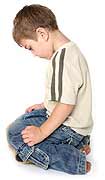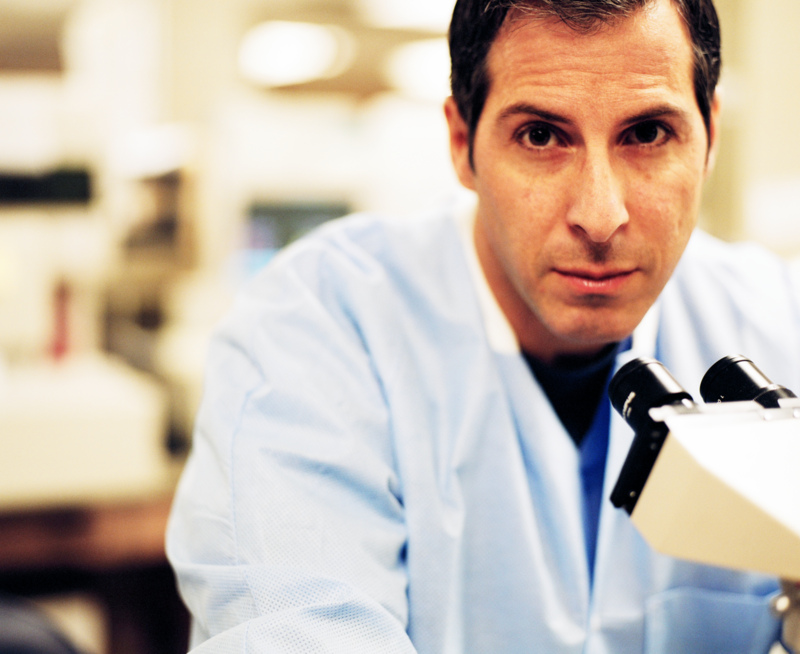
WEDNESDAY, May 14, 2014 (HealthDay News) — There may be a simple way to help spot signs of autism early on in siblings of children with the disorder, new research suggests.
The study, which included 184 children at high risk of autism, found that those who developed the disorder typically started showing some “red flags” as early as 12 months of age.
Specifically, they had an unusually high rate of repetitive behaviors, such as flapping their hands or arms, rocking back and forth, or focusing obsessively on one toy.
Some amount of repetitive behavior is normal for babies, said lead researcher Jason Wolff, an assistant professor of psychiatry at the University of North Carolina at Chapel Hill.
“But in typically developing children, that usually peaks around the age of 6 months,” said Wolff, who is scheduled to present his findings on Saturday at the International Meeting for Autism Research, in Atlanta.
“In children who go on to develop autism, repetitive behavior is still highly prevalent, or even increasing, at the age of 12 months,” Wolff said.
Wolff said an advantage of looking at repetitive behaviors is that parents can report on them with a simple “pen-and-pencil measure.” And it’s possible that such a tool could be used to screen for autism in average-risk children, too, he added.
More research is needed before repetitive behavior can be used as part of an early screening tool, according to Dr. Andrew Adesman, chief of developmental and behavioral pediatrics at Cohen Children’s Medical Center of New York, in New Hyde Park, N.Y.
“This is a promising observation, but it needs refinement before it can be turned into something clinically useful,” said Adesman, who was not involved in the study.
Wolff agreed. For one, he said, his team wants to fine-tune the way repetitive behavior is measured. And any screening tool would have to not only reliably catch autism, but also have a low risk of “false positives.”
“But this study is a good start,” Wolff said.
The precise causes of autism are not clear, but genes are involved. When a child has autism, his or her siblings are at high risk themselves — with a roughly 20 percent chance of developing the disorder, Wolff noted.
And there’s a “great need” for ways to spot those children early, he said. In general, Wolff noted, the earlier that speech and behavioral therapies for autism can be started, the better children do in the long run.
But until now, researchers haven’t looked at whether repetitive behavior can serve as an early red flag.
“At one time, people thought repetitive behavior didn’t really show up until preschool,” Wolff said. But recent research, including the current study, has shown that to be untrue.
For the study, Wolff’s team followed 59 children at average risk of autism and 184 who were at high risk because an older sibling had the disorder. When the children were 12 and 24 months old, their parents completed a standard questionnaire on repetitive behaviors.
Overall, 42 of the high-risk children were diagnosed with autism at age 2. And those children had shown many more repetitive behaviors at the age of 12 months — an average of four to eight different types, Wolff said, versus one or two for kids without an autism diagnosis.
Still, that’s an average difference between two groups, Adesman pointed out. The trick, he said, is to turn that into an assessment that can reliably spot the individual kids who will develop autism.
“There’s a risk you could identify too many kids, and give some of them services that they don’t need,” Adesman said.
He agreed, though, on the need for early screening tools, and said this study points to one potential way.
Researchers are looking into other ways, too. In a separate study reported at the meeting, a team at Boston Children’s Hospital used electroencephalograms (EEGs) to gauge brain activity in 208 babies and toddlers. They found that the readings, taken with electrodes on the scalp, were able to distinguish high-risk youngsters from children at average risk of autism.
And in some cases, the EEG readings were able to separate children who went on to develop autism from those who didn’t.
Because findings from both studies were presented at a meeting and not yet published in a peer-reviewed journal, the results should be considered preliminary.
More information
The U.S. Centers for Disease Control and Prevention has more on autism.
Copyright © 2025 HealthDay. All rights reserved.

